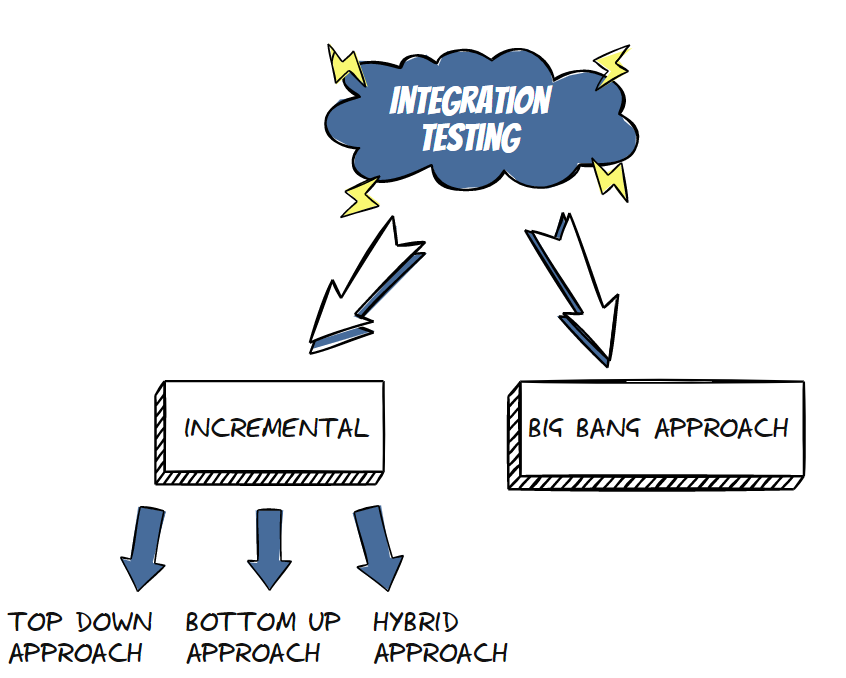So you’re working on a new software project and about to reach the testing phase.
That’s great news!
But have you considered the different testing types you need to perform?
One of them is integration testing.
Integration testing is a vital part of the software development cycle. It helps to ensure that various components of your software, such as modules and subsystems, are compatible with each other.
But what are the benefits and drawbacks of integrating testing?
Integration testing can help identify errors early in the development cycle, making fixing them easier and less costly. It also reduces bugs and improves the overall quality of your software. On the other hand, integration testing can be time-consuming and complex, requiring specialized skills and knowledge.
In this article, we’ll explore the benefits and drawbacks of integration testing in more detail, so you can decide whether it’s the right type of testing for your project.
What is integration testing?
Integration testing is a software testing technique that analyzes the interaction of different components within the software system. It involves testing the interface between different modules to ensure that they are functioning properly as a whole. This testing process aims to detect and fix system interface defects, which may occur due to miscommunication between different modules.
It is performed after unit testing and before system testing.
What are the types of integration testing?
Integration testing is typically staged, meaning that different components are brought together and tested in groups. You can have the following:
- Incremental integration testing – Gradually integrate and test modules until you cover the whole software application.
- Big Bang integration testing – This testing is done by integrating all modules and testing them at once.
In addition, you can further divide incremental testing into the following approaches:
- Top-down integration testing – Top-down approach inspects the higher-level modules first and leaves lower-level modules for later.
- Bottom-up integration testing – This integration testing approach is the opposite of the top-down approach. It involves testing lower-level modules first.
- Hybrid integration testing – This testing includes top-down and bottom-up approaches (using stubs and drivers).

Overall, integration testing is a crucial aspect of software development, as it helps ensure the entire system functions correctly and efficiently. But let’s further analyze the advantages and disadvantages of integration testing.
What are the advantages of integration testing?
Integration testing has the following benefits.
Early detection of issues

One of the primary benefits of integration testing is that it helps in the early detection of issues and regressions at the development stage.
This means that issues on this level of testing can be identified and fixed before they become major problems that are difficult and expensive to resolve. This is done by testing the interfaces between different components or subsystems of a larger system. It ensures that the individual components work together as intended and that data is passed correctly between them.
Integration testing often involves a series of tests that gradually build up in complexity as more components are added, culminating in a comprehensive test of the entire system. As a result, you can significantly reduce the risk of issues arising in the production environment.
In addition, you should have a continuous integration system that runs the tests before every deployment to the testing or production environment. By doing so, will automate integration testing and not be blocked if you need to execute them on a developer’s machine.
Therefore, by performing integration testing, developers can detect issues early in the development cycle, saving time and resources while enhancing the software’s quality. Ultimately, this leads to a more robust and reliable software system that meets users’ needs.
Validation of overall system functionality
To have the most comprehensive test suite, you should combine testing on different levels. This concept is known as the testing pyramid, and it consists of:
- Unit testing
- Integration testing
- UI testing/system testing/end-to-end testing (different people call this level differently)

Unit tests are great and will quickly execute to make sure the functionality of smaller pieces of code works correctly. However, your testing strategy also needs integration tests to get the most out of your testing efforts. Developers can write them in a functional testing style. That means they can partially test the functionality the end user is interested in.
And the testing team will have less to cover with manual testing.
Improves the overall quality of the software
This testing process helps greatly enhance the software’s quality, ensuring that it is reliable, scalable, and can meet end-users needs. Therefore, integration testing is essential in ensuring that a software product is high quality and capable of delivering the desired functionality and performance.
Improved collaboration

As your software project gets bigger and bigger, it becomes harder to test all the different scenarios in the application manually. When multiple teams work on application development, their work will inevitably overlap in some areas.
For example, team A comes and makes changes to module M. Let’s say team A does not write the tests for these changes. But then the team B comes and pushes their own changes to the shared repository, the team B can accidentally break functionality that team A has implemented.
This can result in bugs, delays, and reduced efficiency for both teams.
On the flip side, if team A writes unit and integration tests as part of their software testing process, then team B can confidently make their own changes. They can contact team A to help them fix the failing tests if anything breaks.
As integration testing involves testing different modules and components of the software, it requires collaboration from different teams and developers. This promotes greater teamwork and cooperation, improving the overall quality of the software development process.
What are the disadvantages of integration testing?
Now. let’s talk about some disadvantages since it’s not all rosy when this type of testing is used.
Complex and time-consuming
Integration testing is complex and time-consuming. The complexity of test cases increases as the complexity of the components that need to be tested increases.
It also requires extensive knowledge and skills. That applies to both when writing the integration testing initially and knowing how to troubleshoot them.
Another challenge of integration testing is managing the sheer volume of test cases that must be run.
It is not uncommon to have a codebase with thousands of different possible test scenarios, each of which must be carefully tested to ensure the system functions correctly. Attempting to run all those tests in your local development environment could take a significant amount of your time. Meanwhile, while those tests are executing, you are blocked and can’t really work on something else.
That’s why having a separate test environment where this testing is performed continuously is important.
Difficult to isolate errors

When integration issues arise during execution, identifying the root cause can be challenging due to the increased complexity and interconnectedness of the components. Debugging and troubleshooting require analyzing the logs, tracing the flow of data and control, and pinpointing the exact source of the problem. This iterative process can consume a significant amount of time.
For that reason, it is recommended to use unit tests to check the business logic rules. If your logic has many permutations, you will achieve more by unit testing it. And leave integration testing for checking the end-to-end flows.
Limited test coverage
To achieve comprehensive integration testing, it is necessary to cover all possible combinations of component interactions and edge cases. This requires designing and executing a wide range of test scenarios, including:
- positive and negative test cases,
- boundary conditions,
- and error handling.
Ensuring sufficient test coverage while managing the complexity of interactions can be demanding and sometimes impossible. Again, use the combination of unit and integration testing to handle all testing scenarios.
Costly to Implement
Integration testing requires setting up a realistic testing environment that resembles the production environment.
This involves configuring various components, systems, and their dependencies, which can be complex and costly. Additionally, managing test data, creating test scenarios, and ensuring proper connectivity and access to external systems further contribute to the complexity and duration of integration testing.
Integration testing best practices
If you want to get the most out of integration testing, follow the next best practices:
- It is not necessary to test every possible scenario with integration tests.
- It is recommended to have separate test suites for unit and integration testing.
- Use appropriate naming conventions.
- Integration tests should be included in the continuous integration and delivery (CI/CD) process.
- It is important to reset the test data between each execution.
Read more about why each practice is important in the above-linked article.
Conclusion
Despite the challenges involved, integration testing is essential to ensure the system performs as intended and achieves its desired outcomes.
However, it is an essential practice. It ensures the robustness, reliability, and overall quality of a software system, helping to mitigate risks and enhance the end-user experience.
